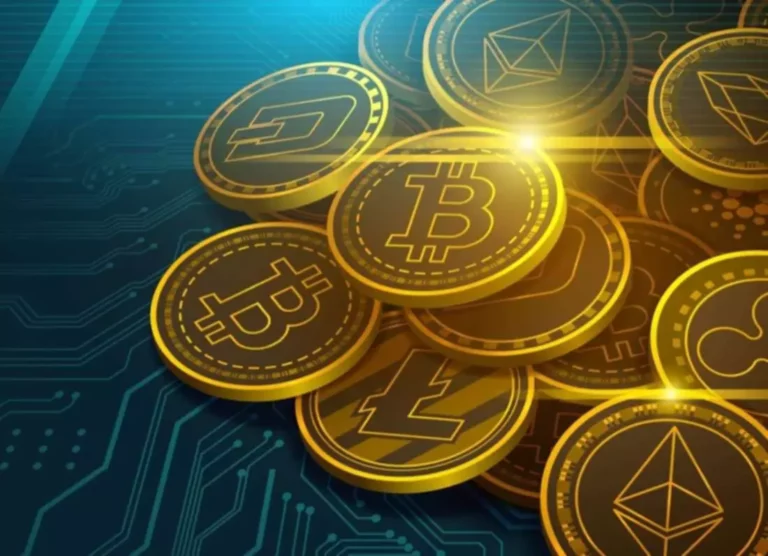Trading with liquidity pool protocols like Bancor or Uniswap requires no buyer and seller matching. This means users can simply exchange their tokens and assets using liquidity that is provided by users and transacted through smart contracts. Liquidity pools are smart contracts containing locked crypto tokens that have been supplied by the platform’s users. They’re self-executing and don’t need intermediaries to make them work. They are supported by other pieces of code, such as automated market makers (AMMs), which help maintain the balance in liquidity pools through mathematical formulas.
A centralized exchange keeps custody of its user’s funds, which means that we may lose all our funds if there is a security breach on the platform. Banks, financial institutions, and principal trading firms (PTFs) all act as liquidity providers in today’s markets. The best liquidity pools are those that are large enough to limit risks and large fluctuations, have a long history, good daily volume, and large reserves. Impermanent loss happens when the price of a token changes relative to its pair, between the time you deposit it in a liquidity pool and when you withdraw it. Coinbase is a leading crypto exchange liquidity provider with over $327 billion in quarterly trading volume and 73 million users across 100 countries.
Bitcoin Cash
It is advised to have extensive knowledge about liquidity pool providers and their features to enable you to maximize user experience. Kyber Network is community-based as KNC owners have the liberty to dictate the number of network fees to serve as a reward to liquidity pool providers proportionally. They also have a significant say on the application of important parameters within the platform. https://www.xcritical.com/ In the equation, x and y represent the units of the tokens available for exchange on the Uniswap platform, while k is regarded as a constant in the equation. The rate at which the tokens are traded is a significant factor in determining the price value of each unit of the token in the pool. This means that only when there’s an exchange or a swap will the value of tokens be altered.
Make sure you do your research and know what you’re getting into before investing any money. On the other hand, add liquidity to a pool by providing both buyers and sellers with liquidity. In return for their efforts, they earn a small percentage of every transaction as a reward. The exchange generally issues a derivative token as a receipt of funds deposited by you. On Uniswap, these tokens are known as LP Tokens (Liquidity Provider Tokens). These LP tokens can either be burnt to withdraw liquidity from the platform or traded as is in the open market.
What Can I Do With A Liquidity Pool Token?
Liquidity is important for all tradable assets including cryptocurrencies. Low liquidity levels mean that market volatility is present, causing spikes in cryptocurrency prices. High liquidity, on the other hand, means there is a stable market, with few fluctuations in price.
- It refers to the ease at which an asset can be converted into another without affecting the market price.
- Without liquidity, traders may face delays, slippage, or high fees.
- A good rule of thumb is to remember that anyone promising that they know which crypto coin will pump next, likely has an ulterior motive.
- There are a number of popular liquidity pool protocols in the cryptocurrency space, including Uniswap, SushiSwap, and PancakeSwap.
- Therefore, limiting one’s investments is advisable as the service and token are relatively new.
By providing access to the underlying assets, investors can make choices about when it’s best for them to buy or sell instead of relying on third-party brokers. Consequently, this reduces opportunities for fraud while simultaneously helping traders make more money by minimizing risk. It is impermanent because the supply of tokens in the pool can return to a 1 BTC to 10 ETH ratio in the future. But if a liquidity provider gains enough exposure, rewards from transaction fees can potentially make up for the impermanent loss. DeFi has proven to solve the traditional cryptocurrency space’s ravening liquidity challenges through automated smart contracts- liquidity pooling. Consequently, the total locked value of the DeFi is over $8.75 Billion according to the DeFI pulse.
The Top 12 Crypto Liquidity Pools In 2023
Bancor’s liquidity pool is referred to as Bancor Relay, and users of this platform can receive a share of a pool’s transactional fees by simply adding liquidity to the pool. This means that when a user adds liquidity to a Bancor pool, they will receive pool tokens proportional to the number of assets added to the pool. Similar to other top liquidity pools providers, when you supply cryptocurrency to the liquidity pool, you will receive a Uniswap token (UNI) in exchange for providing liquidity.

The higher the number of buy and sell orders at each price, the higher the depth of the market. In order to source the best liquidity provider, brokers need assess their own specific needs and make an informed choice based on a number of factors. However, if you want expertise in the field, you can probably check out some cryptocurrency courses. You can even opt for some blockchain certification courses as well and become an expert player in the crypto market. A substantial majority of token votes may be required to bring forward a formal governance proposal in some circumstances. However, participants can unite around a shared cause they believe is vital for the protocol if the resources are pooled together instead.
EthereumPoW
Kyber Network is a decentralized platform that provides liquidity for many different Dapps. As a result, users can trade or swap between many different pairs of Liquidity Pools in Crypto coins. Launched in 2018, Uniswap is the platform that initially popularized the idea of liquidity pools and has been one of the best liquidity pools ever since.

Liquidity in cryptocurrency is determined by the number of interested buyers and sellers. Increased market participation means increased liquidity, which can be a signal of increased market data dissemination. For example, if a token’s liquidity pool has only $10,000 in locked value, and someone sells $1,000 worth of the token into the pool, it could impact the price by nearly 10%. One of the key factors affecting liquidity in the cryptocurrency market is trading volumes. You can check out any cryptocurrency market cap rankings website to see daily volumes, with a higher volume indicating that more people are buying and selling coins.
Who’s using liquidity pools?
If the price of either token rises or falls, if it changes value, then the investor faces a potential loss. Basically, anyone can start an LP on Uniswap, the exchange fee is fixed at 0.3%. This is the most popular and easiest to use the platform in the LP segment, and maybe even all of DeFi. Some of the best DeFi liquidity pools right now are Balancer, Curve, and Uniswap. Of course, there are others, and many DEXes offer LP services as well, but these three are the biggest and most specialized.

For the trade to take place, both parties have to agree on the price of that asset. When this is not achieved, the trade is at risk of falling through. Bancor’s latest version, Bancor v2.1, offers several key features to liquidity providers (LPs), including single-sided exposure and impermanent loss protection. Usually, a crypto liquidity provider receives LP tokens in proportion to the amount of liquidity they have supplied to the pool. When a pool facilitates a trade, a fractional fee is proportionally distributed amongst the LP token holders.
Regulation of Liquidity Pools
This allows users to access the asset without having to purchase it outright, and also provides a way for users to earn passive income from providing liquidity. Liquidity pools are a key component of decentralized finance (DeFi) protocols. Thus, the structure of a pool is something that is decided by the platform itself. The following section presents some of the most notable examples from a list of liquidity pools for 2022.
As fairly new liquidity pools, some of the APY’s offered are well above 1000%. On PancakeSwap you can swap a range of BEP-20 tokens and provide liquidity and liquidity mine on these tokens to earn rewards. The Binance Smart Chain offers liquidity mining for DeFi users at much lower gas fees and transaction costs and greater speeds. You can provide liquidity easily for any pair of ERC-20 Ethereum assets in a few simple steps.
Some Examples of best Liquidity Pools
These two cryptocurrencies are then used as trading pairs for other users to trade against. It operates an open-source exchange where you can create a new exchange pair in a new liquidity pool for any token and at no listing cost. However, the platform charges swappers a 0.3% swapping fee which is shared with the liquidity providers. You may find the token list here or also be able to create a new one.
